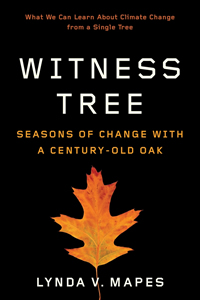 How would it be to spend a whole year observing a forest, the changing seasons and all the beings – plants and animals – that lived there. This is exactly what Lynda Mapes, a science reporter for “The Seattle Times,” decided to find out. She lived on the edge of the Harvard Forest, a 3,000 acre managed research forest in Petersham, Massachusetts, over 60 miles west of the main Harvard campus. “The Witness Tree” is the story of this undertaking.
How would it be to spend a whole year observing a forest, the changing seasons and all the beings – plants and animals – that lived there. This is exactly what Lynda Mapes, a science reporter for “The Seattle Times,” decided to find out. She lived on the edge of the Harvard Forest, a 3,000 acre managed research forest in Petersham, Massachusetts, over 60 miles west of the main Harvard campus. “The Witness Tree” is the story of this undertaking.
To focus her attention, she concentrates on one tree, a northern red oak (Quercus rubra), of early middle age for this species. She examines this tree in every conceivable way, and with the help of experts from many professional and avocational perspectives. She also considers the humans that interact with the tree and the forest, including the cultural history of the area, and its impact on the natural history.
Throughout there is an ongoing consideration of climate and other changes in the forest. Both from the long view over millennia, and the more recent changes, such as the increase of the hemlock woolly adelgid (Adelges tsugae), and near demise of such forest stalwarts as the American elm (Ulmus americana) and the American chestnut (Castanea dentata). Some of this is told from the supposed perspective of her beloved hundred-plus-year-old red oak.
Mapes stayed in New England during the winter of 2014-2015, one of the coldest and snowiest on record. She writes, “While I froze in the Northeast, my husband at home in Seattle was cutting the grass and watching flowers burst forth in the warmest winter on record.” Contrasts like this, and the author’s gentle role in teasing them out of the world around her, makes this a very satisfying book.
Excerpted from the Fall 2017 Arboretum Bulletin.